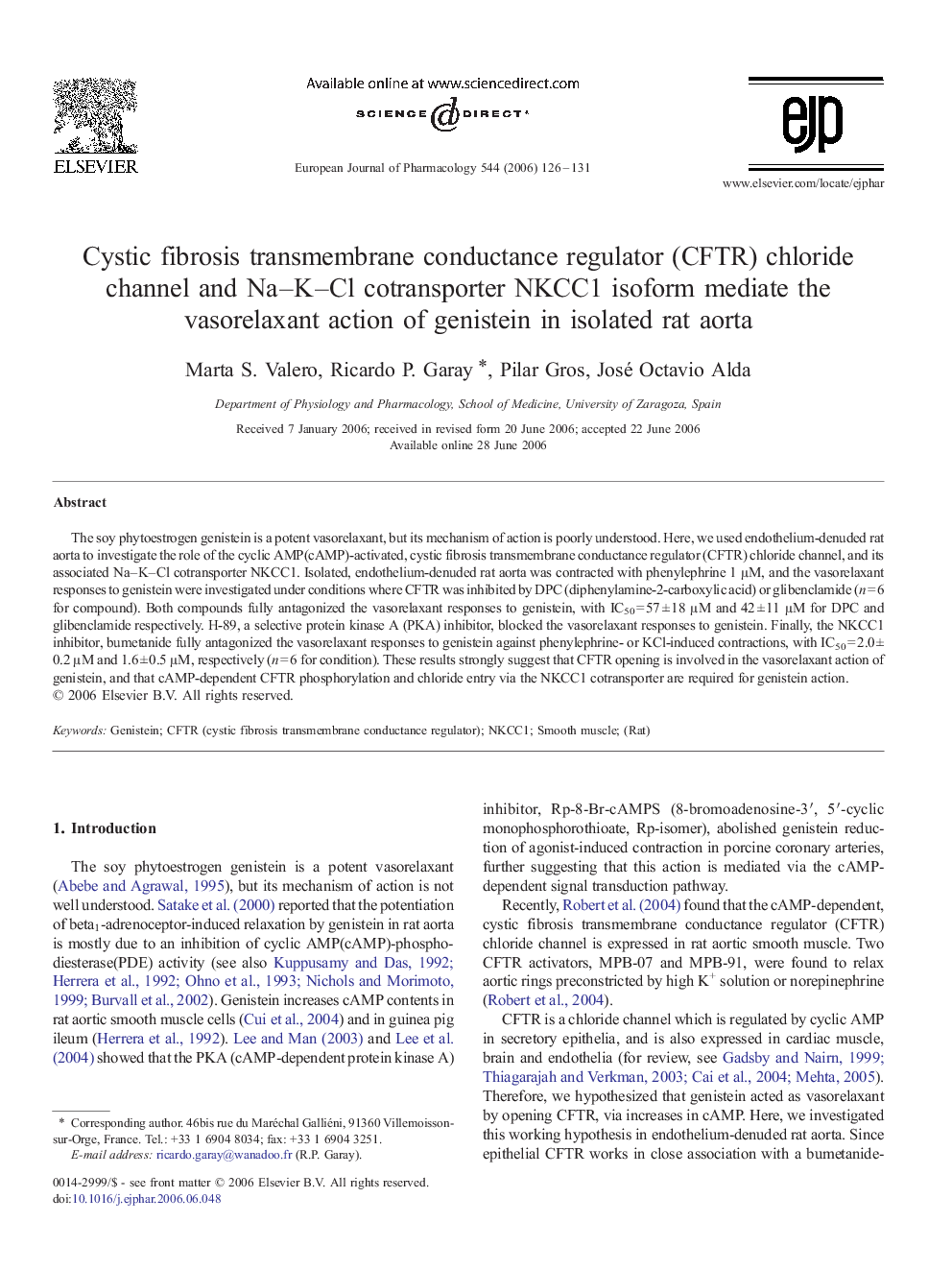| Article ID | Journal | Published Year | Pages | File Type |
|---|---|---|---|---|
| 2536911 | European Journal of Pharmacology | 2006 | 6 Pages |
The soy phytoestrogen genistein is a potent vasorelaxant, but its mechanism of action is poorly understood. Here, we used endothelium-denuded rat aorta to investigate the role of the cyclic AMP(cAMP)-activated, cystic fibrosis transmembrane conductance regulator (CFTR) chloride channel, and its associated Na–K–Cl cotransporter NKCC1. Isolated, endothelium-denuded rat aorta was contracted with phenylephrine 1 μM, and the vasorelaxant responses to genistein were investigated under conditions where CFTR was inhibited by DPC (diphenylamine-2-carboxylic acid) or glibenclamide (n = 6 for compound). Both compounds fully antagonized the vasorelaxant responses to genistein, with IC50 = 57 ± 18 μM and 42 ± 11 μM for DPC and glibenclamide respectively. H-89, a selective protein kinase A (PKA) inhibitor, blocked the vasorelaxant responses to genistein. Finally, the NKCC1 inhibitor, bumetanide fully antagonized the vasorelaxant responses to genistein against phenylephrine- or KCl-induced contractions, with IC50 = 2.0 ± 0.2 μM and 1.6 ± 0.5 μM, respectively (n = 6 for condition). These results strongly suggest that CFTR opening is involved in the vasorelaxant action of genistein, and that cAMP-dependent CFTR phosphorylation and chloride entry via the NKCC1 cotransporter are required for genistein action.
